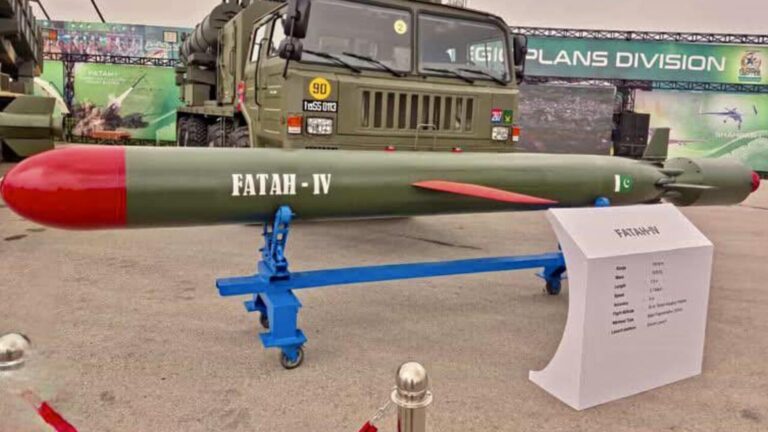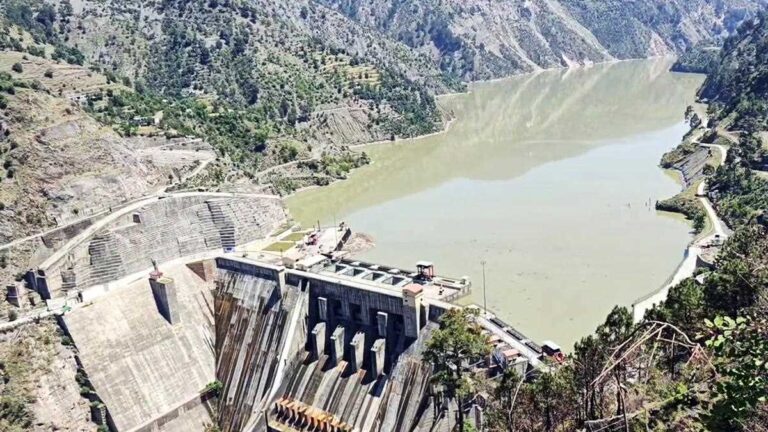
Ahmed Saeed Minhas
The 27th of March 2019, will be remembered as an important day in the proliferation history of the outer space arena. On this fateful day, India tested its ‘made in India’ missile to kill one of its own working satellites in low earth orbit. The test marked India’s technological acumen which had an appreciable degree of precision that made the missile kinetically impact a fast moving satellite, albeit, along the known path in the orbit. The test was titled as operation ‘Shakti’ which in English means ‘divine power’. Unfortunately, the global reaction to Indian diversion of technology yet again, acquired under the garb of peaceful purposes, was subdued barring concerns from some quarters. The first time India misused civilian nuclear technology was when it broke its civil-nuclear agreement with Canada and the U.S. and used the plutonium produced from CANDU reactors (for which U.S. had supplied heavy water) to conduct a nuclear test in 1974. It was that nuclear test, dubbed as Peaceful Nuclear Explosion (PNE) which instigated the nuclear technology possessors to create the cartel of Nuclear Suppliers Group (NSG) to avoid any future proliferation of nuclear technology towards developing nuclear devices, conducting PNEs or nuclear tests. Despite this track record, we are now witnessing an unprecedented and discriminatory effort of a coalition of states led by the U.S. pushing for India’s permanent membership to the NSG.
States with security concerns no longer trust the non-proliferation and disarmament regime, thus giving way to perpetual existential threat. India’s NSG membership would simply be a devastating act which will be ironical to the core. It is likely that India, which has no bindings with respect to the Nuclear Non-Proliferation Treaty (NPT) or the Comprehensive Test Ban Treaty (CTBT), could resort to testing its thermonuclear weapons before it decides to sign the CTBT.
It may be recalled that the Indian space program which started in the 1960s has developed substantially over a period of time. However, India’s space launch vehicles and other ballistic and cruise missile related technologies have had a major leap since 2016, when India was discriminately made full member of the Missile Technology Control Regime (MTCR). India did not take long to maximize its collaboration with its old ally Israel to acquire all such technologies and weapon systems to counter Pakistan’s ballistic and cruise missile based deterrence. The developments since 2016 in India’s missile and space related technologies are alarming for the global and regional peace and should be seen in the context of India’s membership and access to multiple missile and nuclear related cartels.
India no doubt is a huge market for arms sales which keeps the military industrial complexes running across the globe without any consideration for regional peace and stability. Soon after becoming the member of MTCR, India acquired three most sought-after technologies: the Ballistic Missile Defense (BMD) system; the ASAT capability and; Intercontinental Ballistic Missile (ICBM) and cruise missile capabilities. India is modernizing its intercontinental-range Agni missile program and air-launched supersonic BrahMos Cruise missile program at a rapid pace. After its MTCR membership, India managed to acquire Israeli Arrow-2 BMD system which was earlier under MTCR restrictions. In addition, India also secured the deal to purchase S-400 advanced BMD system from the Russians.
India defended its ASAT capability and argued that it did not breach the Outer Space Treaty (OST) of which it is a member. It successfully exploited the legal gaps in the OST to its benefit opening doors for others to follow. After Operation Shakti, India maintained that the ASAT test was not offensive in nature but defensive imitating the U.S. hedging of its own ASAT test. India also argued that while it believes in outer space being the common heritage of mankind, it is committed to ensuring its national security interests amid evolving threats emanating from emerging technologies. India aims to enhancing deterrence through the ASAT capability to keep the threats of long range missiles and other anti-satellite technologies away from its fast growing outer space assets and interests. And in this domain, Article 51 of the UN Charter regarding the ‘right of self-defense’ is likely to be played by India in any future escalation by either carrying out pre-emptive or preventive strikes whenever desired.
It may also be reckoned that attribution is the main issue regarding strikes against satellites. Having ASAT capability would thus be a persuasive technology to initiate action without fear of proper attribution. The growing Sino-Pak collaborative space projects could also come under attack from the Indian ASAT capability. However, engaging each other’s space assets could spiral out of control matched by use of nuclear weapons on each other’s territories exposing the real danger of these offensive technologies acquired in the garb of defense.
The question however remains: where will this space race end since other spacefaring states will not abandon their right of testing the same technology for deterrence purposes.
The milestone achieved by India is not merely a technological leap, it has also strained the already fragile deterrence equation in South Asia. Although Pakistan has a variety of delivery means for its nuclear devices, the cornerstone remains its ballistic and cruise missile capabilities. Any infringement or effort to neutralize Pakistan’s ballistic missiles would directly impact nuclear deterrence. And since the Indian ASAT capability is directly linked with its BMD capability, Pakistan has every reason to be cautious since the ASAT capability also provides a tested technology base for kinetically killing the incoming offensive ballistic missiles.
The Indian ASAT test has several implications for deterrence and strategic stability in South Asia. First, the successful test could motivate the Indian strategic and scientific community to have a doctrinal shift from No First Use (NFU) to First Use about which there has been an extensive debate in India recently.
Second, having this misplaced confidence about checkmating Pakistan’s ballistic missiles could make India opt for offensive preemptive or preventive nuclear or conventional strikes. India’s currently transforming conventional doctrine of having the option of launching surgical strikes under a nuclear overhang against alleged terrorist camps inside Pakistan is testimony to the fact.
Third, Indian arrogance would further make it dismissive about reinitiating composite dialogue with Pakistan which is in a stalemate since the last round of talks which were held in December 2012 between the two countries.
Fourth, ICBMs and ASAT capability could let India push its case for permanent membership of the UNSC which would not bode well for Pakistan.
Fifth, Indian advancement in missile technology will incentivize it to operationalize its Cold Start Doctrine or Pro-Active Strategy. Sixth, the Indian ASAT capability puts a target on Pakistan’s strategic satellites meant for strategic communication, navigation, surveillance, intelligence and guidance purposes. Attack on Pakistan’s strategic satellites could also be a false flag (based on the recurring pattern), making it look like it was an accident enough to panic the strategic command in Pakistan. One can only hope that all consequences are thought through if India ventures into this direction.
Lastly, Pakistan National Command Authority (NCA) has an elaborate Space Vision-2047 program according to which Pakistan aims at becoming a spacefaring nation with technologically credible advanced peaceful space program. Indian offensive capability in terms of ASAT thus poses a serious threat to Pakistan’s Space Vision.
Pakistan maintains a consistent position with regard to weaponization of space. It has proposed drafts of Treaty on the Prevention of the Placement of Weapons in Outer Space (PPWT) and Prevention of Arms Race in Outer Space (PAROS) at the Conference on Disarmament (CD). Pakistan has been at the forefront of seeking outer space free of strategic weapons. Pakistan has also raised concerns about gaps in international space laws which incentivize prospective violators to keep exploring the probability of achieving capability of possessing weapons in outer space. Pakistan firmly believes that outer space is common heritage of mankind and should remain as such so that long term sustainability of outer space could be ensured for its lasting utilization in the socio-economic domains. While Pakistan has no intent to invest in having ASAT capability, it is pursuing diplomatic channels to put a halt to the weaponization of space. Pakistan’s resolve to keep the weapons away from outer space is also evident from signing of Pakistan-Russia joint statement on ‘No First Placement of Weapons in Outer Space’ on May 22, 2019. Pakistan fully believes that there should be no use or threat of use of weapons in outer space against space based assets and desires that other spacefaring or aspiring states follow suit.
Indian ASAT capability is destabilizing for peace and stability in South Asia. Pakistan has full spectrum deterrence against full spectrum of threats emanating from its eastern border. Checkmating Indian BMD or ASAT capability in kind may not be economically viable for Pakistan. Moreover, arms race in outer space is also against Pakistan’s known stance about space weaponization. However, it needs to modernize its strategic and conventional assets and their delivery means without economic meltdown. As disturbing as Indian ASAT capability is, Pakistan needs to concentrate on achieving its objectives under Space Vision-2047 while continuing diplomatic drive to achieve a peaceful outer space.
Dr. Ahmed Saeed Minhas is a faculty member at DHA Suffa University, Karachi





